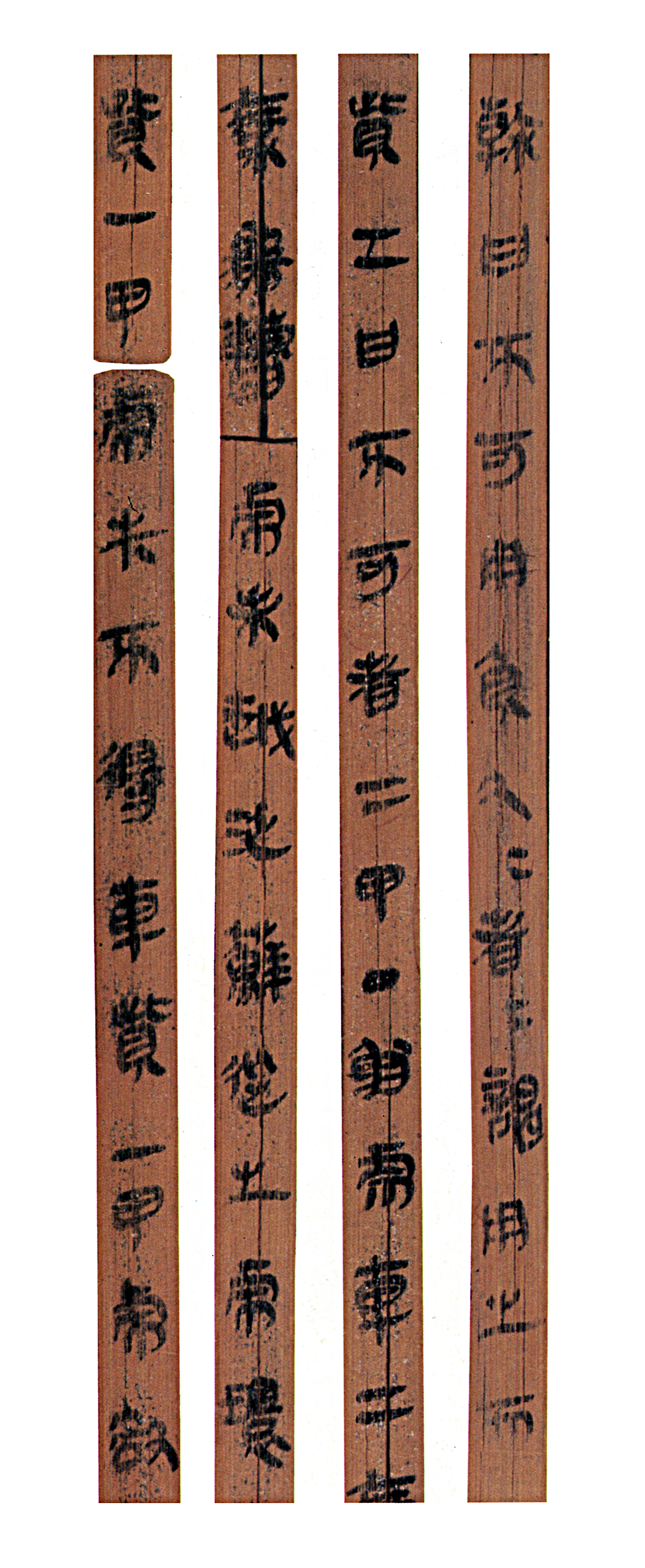|
 |
In 1975, a tomb dating to 216 BCE was found at Shuihudi 睡虎地, Hupei Province. It belonged to a man named Xi, a lower echelon official serving the newly established Qin Dynasty (221-207 BCE). While the tomb itself was not very impressive, the objects found in it—especially a group of inscribed bamboo slips—caused shock waves among the scholarly community, and, eventually, throughout the entire world. Among the bamboo slips were two versions of a text with the title of Daybook, or Rishu 日書. The Daybookis a collection of various short texts aimed at providing a practical guide to everyday actions. For this reason, it more or less constitutes the equivalent of the almanacs in the European tradition.
Materials and Techniques of the Fabrication of the Daybook
The Daybook is written in ink on bamboo slips gathered into a roll. Bamboo and wood slips and silk cloth were the usual media for writing before the invention and spread of papermaking in the Han Dynasty (206 BCE-220 CE). Because bamboo and wood slips were relatively inexpensive materials and required a minimum amount of labor to produce, they were more commonly used than silk.
Archaeological finds from tombs from the Warring States Period (475-221 BCE) include texts written on bamboo and wooden slips and on silk cloth, but the majority of the excavated texts are on bamboo slips. Bamboo slips often remain in a good state of preservation after two thousand years because underground water gradually infiltrated many tombs, submerging the slips in water and preventing deterioration. The charcoal-based Chinese ink used on the slips is indelible and generally retains its coloration long after excavation.
The size of the slips varies: they can measure from 20 cm to 40 cm long and about 2 cm wide. In general, a slip will contain one line of writing, and a “book” is made by binding a number of slips together to form a continuous surface. The book can then be rolled up and stored. The Chinese character for “book” is ce 冊 is a graphic representation of an open page of bamboo slips. The Chinese character for “chapter” is juan 卷, meaning “roll,” which is to say a roll of bamboo slips.
The writing instrument for both bamboo slips and silk cloth was the brush, which was in use as early as the Shang Period (1700-1027 BCE). Since the brush was in use at that early time scholars infer that people in this period probably used bamboo slips or silk cloth as writing surfaces. Unfortunately, no direct evidence for this has been found to date.
|